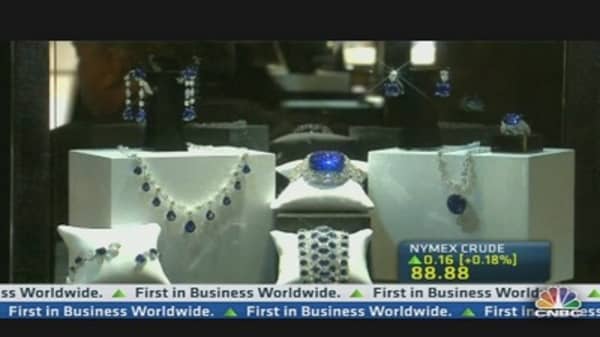With their polished sales pitch and discrete security, it looks like just another high-end diamond show room in a well-heeled Asian capital.
The stones were probably mined in South Africa; cut, polished and finished in India and shipped to the luxury-hungry markets of Singapore, Hong Kong and Shanghai.
But the source of these precious stones is way closer than you think.
Just yards from the display cases in an unassuming industrial park in northern Singapore is the city's first 'above-ground' diamond mine owned and operated by privately-held Type IIa Technologies.
But there's not a grim-faced mine worker in sight.
(Read More: Why Are Indians Suddenly Buying Diamonds?)
That's because the company claims it can produce - or grow - the purest and rarest grade of rough diamonds (Type IIa) in a laboratory process called Microwave Plasma Chemical Vapor Deposition. Put simply, carbon atoms are layered on top of an initial diamond 'seed,' fast-tracking a natural process lasting many millennia to a matter of months.
And because these stones are lab-made, they're good for the environment and are free of the 'blood diamonds' stigma that's so tainted their traditionally-mined counterparts.
Breakthrough?
According to the company, competitors around the world have been trying to develop the purest Type IIa diamonds, but here, in Singapore, is where the breakthrough has happened.
Technical director DS Misra says eight years of R&D gave them the edge.
"That eight years was enough time for us to understand each and every bit of the technology in the process, to be able to achieve the success, which others have found very hard," Misra told CNBC.
We couldn't film the process as the developers said it was commercially-sensitive. But Managing Director Vishal Mehta says there's increasingly strong demand for its lab-grown diamonds from high-tech industries like semi-conductor makers to heavy industry.
"We are really excited to say that the overwhelming response from customers has been absolutely fantastic," Mehta said. "We bring the ability to use diamonds in many, many different applications beyond the traditional usage of diamonds."
(Read More: Diamonds Trump Gold as Investor's Best Friend: Pro )
The World Jewelry Confederation defines synthetic diamonds as: "A man-made reproduction of a diamond that has essentially the same chemical composition, crystal structure and physical properties as its natural counterpart."
Prestigious
Steve Benson, communications director at the Confederation says there is nothing illegal about a synthetic diamond, as long as the consumer is expressly informed that this is what he or she is buying.
"If the diamond is not qualified as 'synthetic' then the consumer has not been provided with what is necessary in order to make an informed purchasing decision, and he or can claim to have been deceived," Benson said.
But do lab-grown diamonds command the same recognition, premium and prestige as their traditionally-mined counterparts?
Yes, they do - depending on the market segment - according to the International Diamond Council's Ya'akov Almor.
Man-made diamonds have a critical and growing role to play in industrial applications such as mining, construction and electronics.
"Synthetics have a place in the market and it's completely legitimate market. There is a need for flawless, clean, synthetic diamonds especially for the semi-conductor industry,"Almor said.
(Read More: Conflict Minerals in Your Mobile—Why Congo's War Matters)
In fact, synthetics have a decades-old history in the industrial market.





